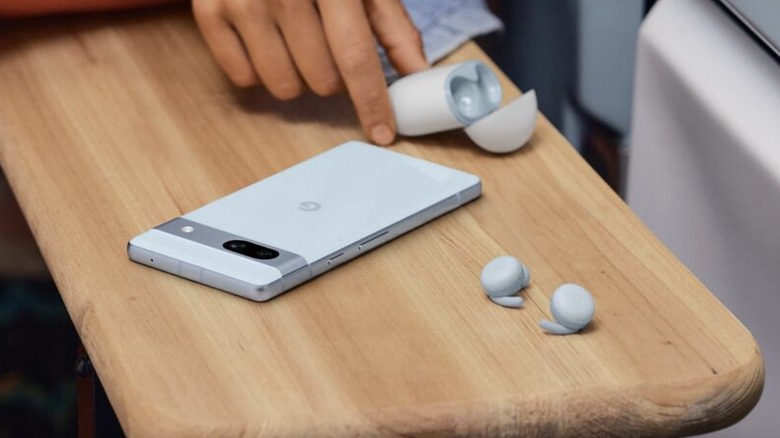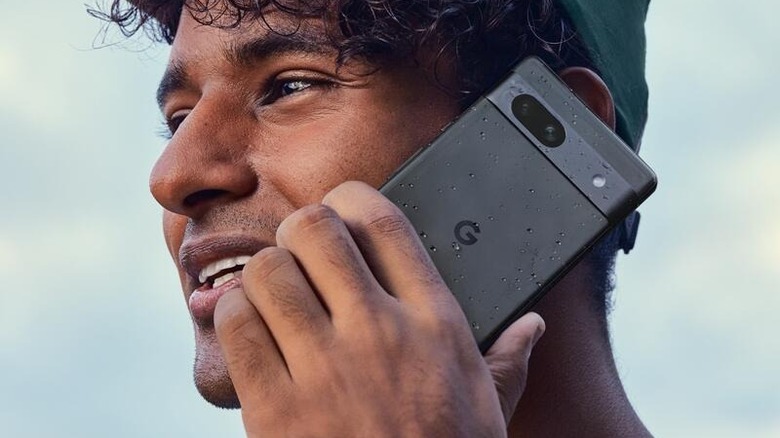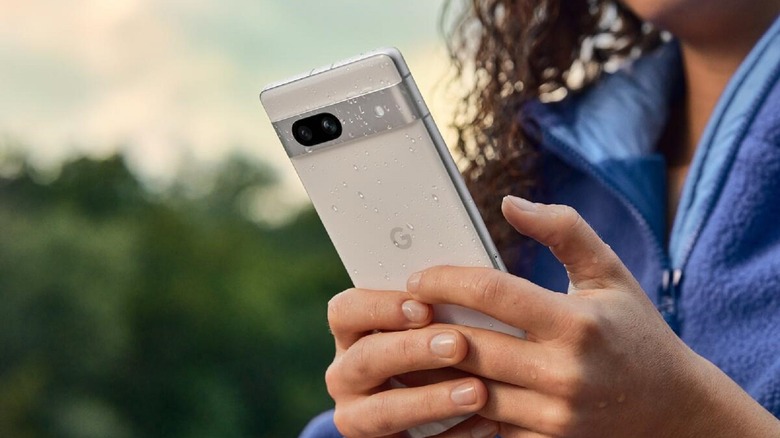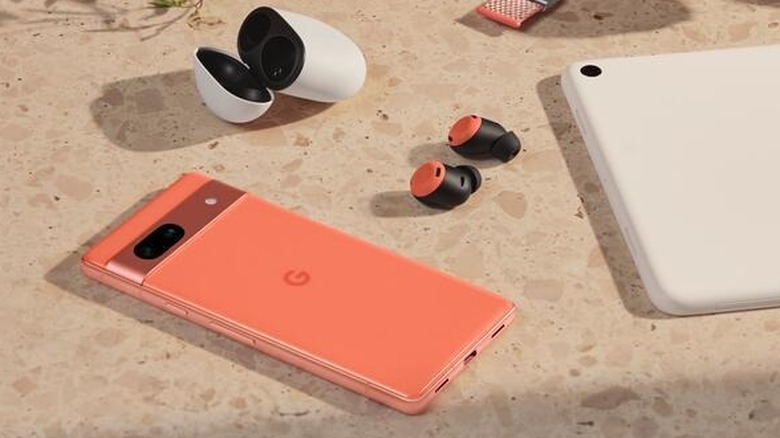Google Pixel 7a Vs. Pixel 7: Key Differences You Need To Know Before Buying
We may receive a commission on purchases made from links.
Earlier today, Google took covers off its newest mid-range offering for 2023, the Google Pixel 7a, alongside its first foldable phone, the Pixel Fold, and its new tablet, the rather unimaginatively named Google Pixel Tablet. This new smartphone joins Google's existing seventh-generation Pixel lineup, which also includes the Pixel 7 and the Pixel 7 Pro.
With the arrival of the Pixel 7a, Google's current smartphone lineup spans a wide price range starting at $499 for the Pixel 7a, and going up well above the $1000 mark for the Pixel Fold. However, looking closely at Google's current lineup of candy bar devices is when things get really interesting. While the mid-range Pixel 7a is arguably the cheapest of the lot at $499, the slightly older but more premium Pixel 7 is only $100 more at $599. If you run into one of the many discounts currently available for the Pixel 7, you could actually grab that device for the same price as the Pixel 7a — $499.
Therefore, it is not entirely unwise to assume that anyone considering the $499 Pixel 7a has every reason to consider an 'upgrade' to the Pixel 7. But would that be a wise decision? Why would someone even consider a Pixel 7a, if the better, more premium Pixel 7 is available for the same price? Let's investigate.
Pixel 7a vs. Pixel 7: Which has the better hardware?
Despite its mid-range credentials, the Pixel 7a is as powerful as its more expensive sibling, given that they share the same Tensor G2 SoC. Where the Pixel 7 scores a win over the 7a is in terms of the storage options, with the former giving consumers the option to upgrade to a 256GB option. While this adds $100 to the price tag, it is nonetheless an option that the Pixel 7a lacks altogether.
Both of these phones are relatively compact devices by 2023 standards. If you prefer bigger screens, though, the Pixel 7 should be your default choice, thanks to its larger 6.3-inch display. The Pixel 7a, in comparison, uses a smaller 6.1-inch panel. The smaller size aside, the Pixel 7a's display is nearly as good as the Pixel 7, especially because it now supports a 90Hz refresh rate. The Pixel 7 also gets better scratch protection and durability, thanks to Gorilla Glass Victus. The Pixel 7a, on the other hand, gets by with a layer of Gorilla Glass 3.
While Google claims 24-hour battery life for both devices, real-life battery life has been of concern on the Pixel 7. What is already working in its favor is that it has a slightly larger battery (4385 mAh) compared to the 4355 mAh battery on the Pixel 7. Where it loses to the Pixel 7 is when it comes to wired charging speeds which have been capped at 18W (compared to 20W on the Pixel 7). The Pixel 7a adds support for wireless charging this time around, which is a welcome move. Wireless charging is already supported on the Pixel 7.
Pixel 7a vs. Pixel 7: Which one's got the better camera?
Moving on to the all-important camera setup, this is where all the Pixel 7a's recent upgrades put it nearly on par with the Pixel 7. While both phones feature dual rear-facing cameras, the new 64MP (1/1.73-inch) sensor on the Pixel 7a is actually larger than the 50MP (1/1.31-inch) sensor on the Pixel 7. There isn't much separating the rest of the primary camera specs, including the aperture value (f/1.89 on the 7a vs. f/1.85 on the Pixel 7) and the field of view (80-degree on the Pixel 7a vs. 82-degree on the Pixel 7).
It's a similar story with the secondary rear-facing ultrawide camera setup. The Pixel 7a gets a significant resolution bump this time around, with the device now getting a 13MP ultrawide camera. This gives it a slightly higher resolution compared to the 12MP ultrawide camera on the Pixel 7. The cheaper Pixel 7a also offers a wider field of view (120-degree) as opposed to the 114-degree FOV for the Pixel 7. The only area where the Pixel 7 scores over the 7a is support for laser autofocus (compared to dual pixel phase detection AF on the 7a).
As far as the front camera goes, it is the Pixel 7a again which gets the (slightly) larger (13MP) sensor compared to the 10.8MP sensor of the Pixel 7. Both these sensors are mated to a fixed focus lens with an identical aperture (f/1.22) and a near-identical field of view. Still, the Pixel 7s offers a slightly wider perspective at 95 degrees compared to 92.8 degrees on the Pixel 7.
Pixel 7a vs. Pixel 7: Which one's the right choice for you?
Many people will be able to grab the Pixel 7 for the same price tag as the Pixel 7a. However, while the Pixel 7 is arguably positioned one segment above the Pixel 7a, the differences are not that significant this time around.
For one, you get identical performance, given that both use the same processor. The Pixel 7a has also caught up with its premium sibling in terms of the camera hardware, with little separating the two. The only area where the Pixel 7a still has a noticeable lead over the 7a is when it comes to the build of the device. While the Pixel 7 gets a glass-clad rear panel, the 7a gets by with a plastic-clad panel. Both phones do, however, feature identical metal frames, and the 7a even gets a better metallic camera bump, which was lacking in its predecessor, the Pixel 6a.
Considering that the Pixel 7a will also get five years of Pixel updates, getting the newer Pixel 7a will ensure that its support window will be slightly longer than that of the Pixel 7. If that wasn't all, Google has already confirmed that the 7a will also be eligible for most of the Pixel feature drops.
In conclusion, the only reasons for anyone to consider the Pixel 7 over the Pixel 7a would be the availability of a higher storage variant and a slightly bigger screen promised by the former.



